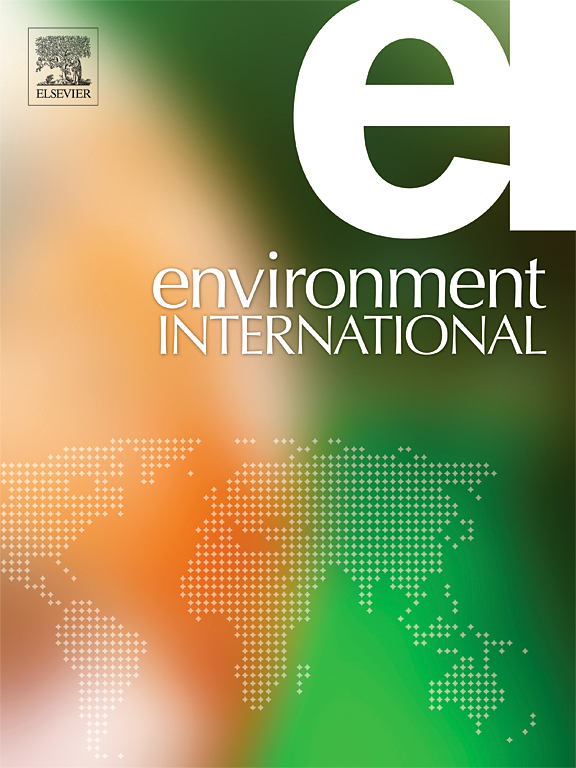201名南非儿童尿液农药生物标志物水平的时空变异性在两年内采样五次
IF 9.7
1区 环境科学与生态学
Q1 ENVIRONMENTAL SCIENCES
引用次数: 0
摘要
了解儿童农药接触随时间变化的情况对于了解农药对健康的潜在急性和长期影响至关重要,但缺乏相关数据。本文章由计算机程序翻译,如有差异,请以英文原文为准。

Spatiotemporal variability of urinary pesticide biomarker levels in 201 South African children sampled five times over two years
Background
Understanding pesticide exposure variability over time among children is crucial towards understanding potential acute and long-term health effects of pesticides but data is lacking.
Objective
We assessed spatiotemporal and seasonal variability of urinary biomarkers in children at five time points across two years within three agriculturally intensive areas of the Western Cape, South Africa (Grabouw, Piketberg and the Hex River Valley).
Methods
A total of 201 children (aged 9–15 years) provided a total of 1005 spot urine samples and completed pesticide exposure-related questionnaires at five time points between 2017 and 2019. Nineteen urinary pesticide biomarkers including organophosphates, pyrethroids, dithiocarbamate and triazoles were analyzed using liquid chromatography tandem mass spectrometry and adjusted for specific gravity. Intraclass correlation coefficients (ICCs) evaluated temporal agreements between repeated urine samples. Linear mixed-effects models assessed the effects of farm residency, study area and pesticide spraying period on urinary pesticides levels. Risks of daily intake of pesticides were estimated using reverse dosimetry.
Results
Ten out of fourteen detected biomarkers had a detection frequency above 75%. Levels of 2-isopropyl-4-methyl-6-hydroxypyrimidine (IMPy) (ICC = 0.60) and 3, 5, 6-trichloropyridinol (TCPy; ICC = 0.49) showed moderate and fair temporal agreement between the five sampling points. Children in Grabouw had on average higher biomarker levels compared to the other two areas. Pesticides’ specific spraying periods were associated with an increased TCPy (+32%), IMPy (+79%) and ethylene thiourea (ETU) (+81%) levels compared to non-spraying periods. The estimated daily intakes (EDIs) for most biomarkers were within the acceptable daily intakes (ADIs). However, EDIs exceeded the ADIs in 23.0% of children for TCPy, 8.9% for IMPy, and 0.5% for both 3,5-dichlorophenyl-2-chloroacetic acid (DCCA) and 4-hydroxy-pyrimethanil (OHP).
Discussion
High temporal variability and regional exposure contrasts highlight the need for repeated urinary biomarker measurements across locations to accurately assess pesticide exposure for epidemiological studies in rural children. Observed exposure levels exceeding safety thresholds for organophosphates, pyrethroids and triazoles warrant further investigation.
求助全文
通过发布文献求助,成功后即可免费获取论文全文。
去求助
来源期刊

Environment International
环境科学-环境科学
CiteScore
21.90
自引率
3.40%
发文量
734
审稿时长
2.8 months
期刊介绍:
Environmental Health publishes manuscripts focusing on critical aspects of environmental and occupational medicine, including studies in toxicology and epidemiology, to illuminate the human health implications of exposure to environmental hazards. The journal adopts an open-access model and practices open peer review.
It caters to scientists and practitioners across all environmental science domains, directly or indirectly impacting human health and well-being. With a commitment to enhancing the prevention of environmentally-related health risks, Environmental Health serves as a public health journal for the community and scientists engaged in matters of public health significance concerning the environment.
 求助内容:
求助内容: 应助结果提醒方式:
应助结果提醒方式:


